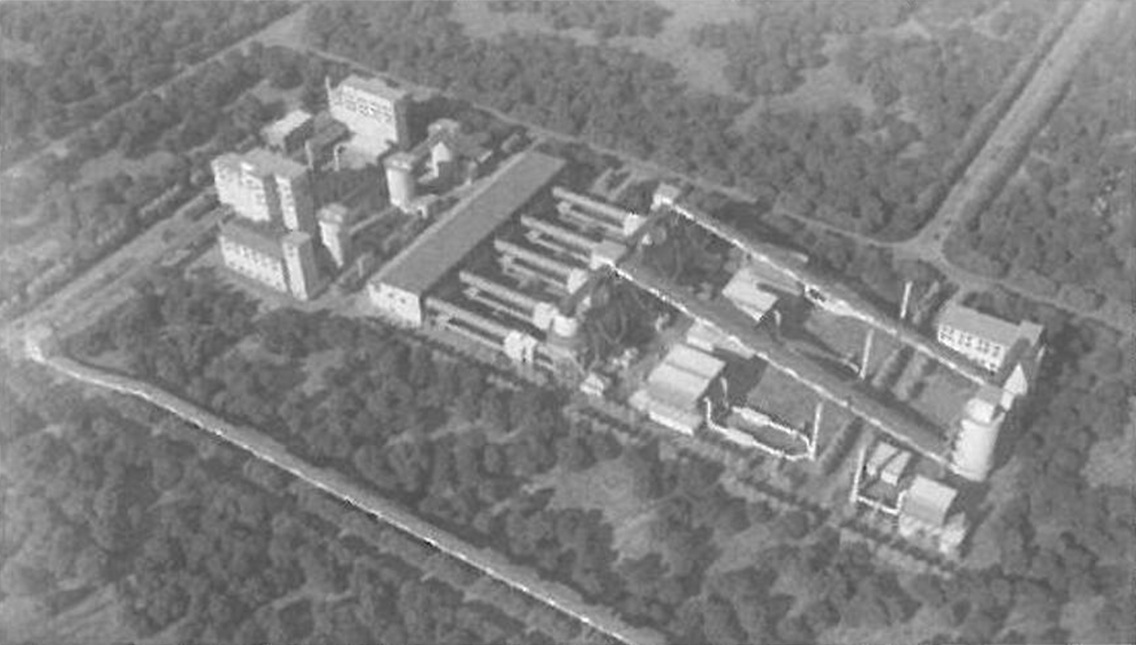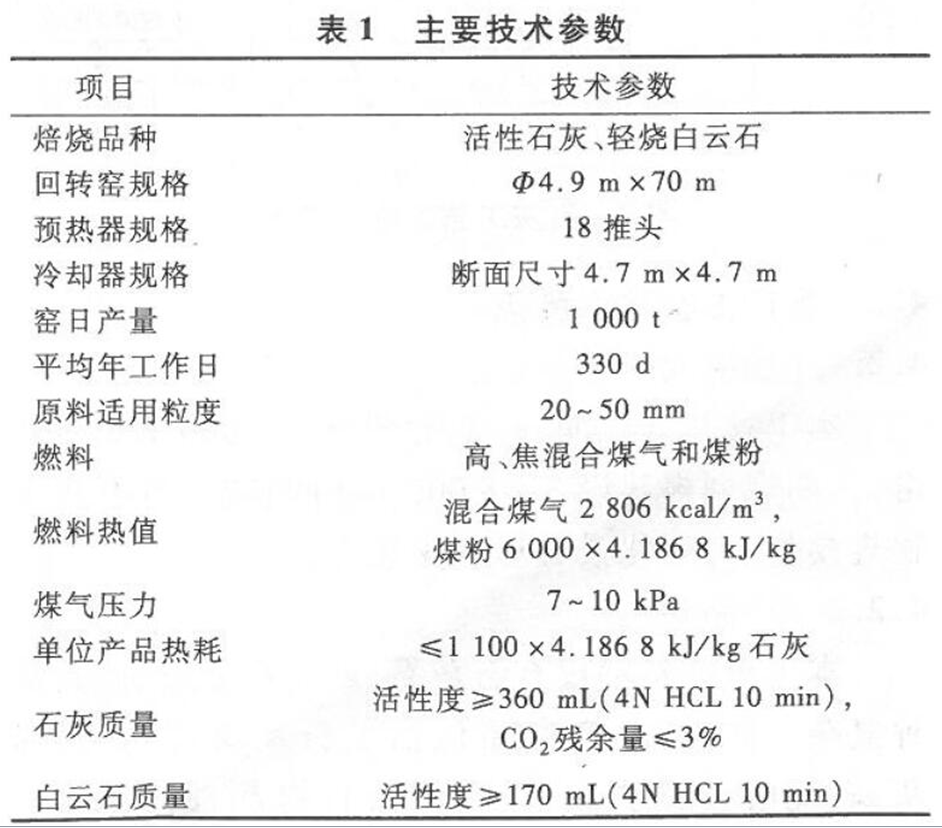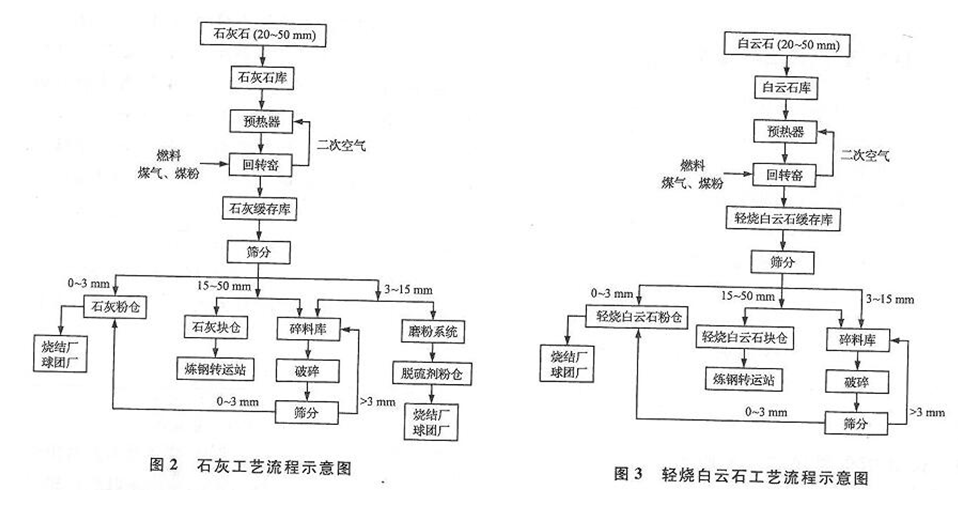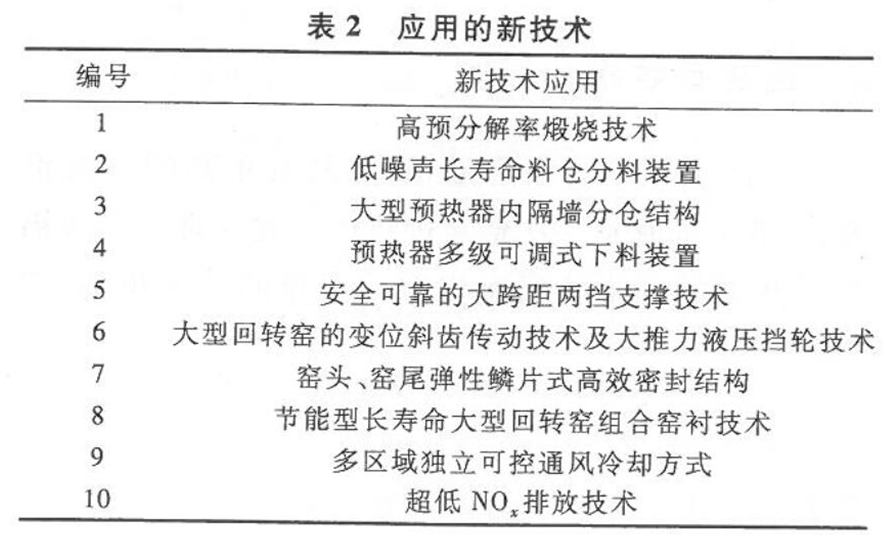5000tpd Active Lime Production Process
2022-05-10
Lime is an indispensable and important raw material in the economy and is widely used in metallurgy, building materials, petrochemical, environmental protection, food and other industries. With the continuous development of the global economy, lime production is showing an increasing trend year by year. Lime is mostly used in steel, chemical industry, construction, building materials, agriculture, medicine, and environmental protection. For the deep processing industry of lime, such as the light calcium carbonate industry, its use is more extensive, not only can be used in building materials industries such as coatings, paints, putty powder, PVC pipes, but also in food, medicine, daily chemicals and other industries. The development prospect is broad.
Lime kiln is the core equipment of lime production. Independent innovation and development of new kiln types, new technologies, rational configuration of lime kilns, and large-scale lime kilns are important ways for the scale and specialization of the lime industry. Compared with other types of lime calcinating kilns, rotary kilns have large production capacity, high product activity, uniform and stable quality, and strong adaptability to raw materials. The fuel ash has little pollution to the product, high degree of automation, simple control system, easy operation, high labor productivity and simple kiln structure, smooth air flow, sulfur-containing flue gas can be discharged in time, and sulfur in fuel is not easy to adhere, so the product contains sulfur It occupies a very important position due to the advantages of low quantity.
This paper focuses on the production process and technical characteristics of the 5x 1000 t/d active lime rotary kiln project.

1. Project scale, final products and construction scope
(1) Design scale: 5 new 1000 t/d active lime rotary kilns are built, among which 4 1000 t/d rotary kilns produce lime and 1 1000 t/d rotary kilns produce light burned dolomite.
(2) Product varieties: active lime block ash, active lime powder ash, lightly burned white cloud stone ash. Light burned dolomite powder ash, desulfurization powder ash.
(3) the construction scope: including raw material storage system, feeding system, calcining rotary kiln system, waste gas treatment system (reserved denitration system), finished product storage, crushing screening dispersed system, finished the blues pneumatic conveying system, coal pulverizing system of desulfurizer, environmental dust removal system, water supply and drainage system, circulating water system, PLC automatic control system and instrument testing system, communication system, Monitoring system, fire control system, etc.
2. Design guidelines and main principles
(1) Adopt mature and reliable new process and technology, so as to be technically advanced, economical and reasonable, practical and reliable.
(2) Pay attention to environmental protection, the use of efficient dust removal facilities, so that it meets the environmental protection standards of the location of the enterprise.
(3) All dust dust recycling. In the design, the transport and drop of materials should be reduced as far as possible, and dust collection should be divided into different regions for all dust spots. Environmental protection standards should be strictly implemented to achieve standard discharge.
(4) In the selection of equipment, on the basis of the principle of "reliable and practical, investment saving, advanced technology, energy saving and consumption reduction", the specifications and models should be unified as far as possible, in order to manage production and reduce the type and quantity of spare parts.
3. Production technology and equipment
3.1 Production process
(1) Raw material feeding system
After screening by the raw material yard, the limestone and dolomite of 20~50 mm that meet the roasting requirements of the rotary kiln are transported from the material yard to the limestone storage and dolomite storage of the lime factory by belt conveyor respectively. The dolomite in the dolomite reservoir and the limestone in the limestone reservoir are respectively sent to the preheater by belt conveyor.
(2) Rotary kiln roasting system
After entering the preheater, the limestone/dolomite is preheated by flue gas at 1100 ℃ at the end of the kiln, and part of the limestone/dolomite is decomposed in the preheater. The preheated material is pushed out by the hydraulic push rod and transported into the rotary kiln through the transfer chute. The material is roasted and decomposed in the rotary kiln, and the roasted lime/dolomite enters the vertical cooler. After cooling by the cold air sent from the bottom, it is discharged to the collecting hopper through the vibration feeder, and then sent to the finished product system through the chain hopper. The cold air is heated while cooling the material in the cooler, and enters the kiln through the kiln hood to participate in combustion as the secondary air of fuel combustion. The fuel used in the rotary kiln is sent to the rotary kiln head workshop through the gas and pulverized coal pipes respectively, and is burned in the rotary kiln from the kiln head through the burner. The hot flue gas generated by fuel combustion is discharged from the end of the kiln together with the waste gas generated by the decomposition of the material after roasting and heating the material, and enters the preheater through the transfer chute to preheat the limestone/dolomite. The flue gas after preheating limestone/dolomite is discharged from the preheater and removed by the dust collector and then discharged into the atmosphere by the exhaust machine. Main technical parameters are listed in Table 1.

(3) Finished product storage and transportation system
After cooling, the lightly burned dolomite is sent to the lightly burned dolomite cache by the conveyor, and the vibration feeder is set at the bottom of the cache. The material is then transported by the vibration feeder, belt conveyor and plate and bucket elevator into the double-layer double-buck screen for screening. Among them, sieve material (0~ 3 mm) into the light fired dolomite powder bin; Sieve feeding (15~50 mm) into the lightly burned dolomite stone warehouse, can also directly into the lightly burned dolomite debris warehouse; Sieve material (3~15 mm) directly into the lightly burned dolomite debris storage. The material in the crusher is sent to the vertical composite crusher for crushing, and the broken light burned dolomite enters the single layer multiple frequency screen for screening. The sieve feeding (0~ 3 mm) directly enters the light burned dolomite powder bin, and the sieve feeding (> 3 mm) returns to the light burned dolomite crusher.
After cooling, the active lime is sent to the lime cache by the conveyor. The bottom of the cache is set with a vibrating feeder. The material is transported by the vibrating feeder, belt conveyor and plate chain bucket elevator into the double-layer multifrequency screen for screening. Sieve material (0~ 3 mm) into the lime powder bin; Sieve feeding (15~50 mm) into the lime block bin, can also directly into the lime debris bin; Sieve material (3~15 mm) can be directly into the lime powder storage, but also into the desulfurizer powder system. The material in the crusher is sent to the vertical composite crusher for crushing, and the crushed lime enters the single-layer multifrequency screen for screening. The material on the screen (> 3 mm) returns to the lime crusher, and the material off the screen (0~ 3 mm) enters the lime powder silo.
(4) desulfurizer powder making system
The lime that enters the desulfurizer powder making system enters the feeding bin of the mill, and the lime in the feeding bin is sent to the grinding system by the belt metering feeder. After grinding, qualified size of lime is collected by cyclone and cloth bag dust collector and then enters the desulfurizer powder silo.
(5) Finished product delivery system
Massive activated lime and lightweight burned dolomite are transported to steelmaking transfer station by belt conveyor. The finished product block bin is equipped with loading device, the finished products can be transported out by car in special circumstances. Powdery active lime, powdery light burned dolomite and desulfurizer are delivered to sintering plant and pelletizing plant by pneumatic conveying. The finished product powder bin is equipped with loading device, and the finished product can be transported out by tank car in special circumstances.
(6) Schematic diagram of lime process flow and lightly burned dolomite process flow
See Figure 2 and Figure 3 for the process flow of lime and light burned dolomite.

3.2 Characteristics of production technology
3.2.1 the size
The project is divided into two phases. In the first phase, 5 × 1000 t/d rotary kiln is constructed, and in the second phase, another 3X1 000 t/d rotary kiln is planned, which is of milestone significance for large-scale and large-scale lime engineering.
3.2.2 products more
The raw materials of this project are not only limestone, but also dolomite, with complex raw materials. At the same time, the production products include lime block ash, lime powder ash, light burned dolomite stone ash, light burned dolomite powder ash, desulfurizer ash. The complex types of raw materials and finished products also put forward higher requirements for the design of the whole production line.
3.2.3 Multiple systems and complex layout
The main system of the project includes the following parts:
(1) Raw material feeding system : 1 limestone warehouse,1 marble warehouse;
(2) Rotary kiln roasting system : 5 rotary kilns;
(3) Finished product cache system : 2 active lime cache library and 1 lightly burned dolomite cache library;
(4) Finished product screening, crushing, storage and transportation system :1 lime debris warehouse,1 lime powder ash warehouse,1 lime block ash warehouse,1 lightly burned dolomite debris warehouse,1 lightly burned dolomite powder ash warehouse,1 lightly burned dolomite stone ash warehouse;
(5) desulfurizer powder making system : 3 mill feeding silos,1 desulfurizer powder silo;
(6) Finished product delivery system: the lime and light burned dolomite powder are transported to the sintering plant by pneumatic conveying, and there are loading interfaces; The block ash is transported to the transfer station at the interface of steelmaking plant by belt conveyor, and there is a loading interface; The desulfurizer is sent to sintering plant and pellet plant by pneumatic conveying, and there is a loading interface;
(7) Pulverized coal storage and transportation system : 3 pulverized coal warehouses, pulverized coal and gas pipelines.
Kiln end area: the kiln end area is mainly the dust removal system, raw material warehouse, comprehensive electrical room, circulating water system and other facilities of the rotary kiln. The raw material warehouse is arranged on the east side of the land area, close to the steel raw material yard, and the belt connection length is shortened as far as possible. The dust removal systems of five rotary kilns are centrally arranged at the kiln tail, and the comprehensive electrical room is located near the facilities with large power load.
Rotary kiln area: mainly includes 5 rotary kilns and kiln head factories. 5 rotary kilns are arranged side by side and connected with kiln head factories.
Kiln head area: mainly including lime finished product warehouse, dolomite finished product warehouse, pulverized coal storage and transportation system, dust removal system and other facilities. This area is the main transportation area of this unit and is likely to produce dust. Centralized arrangement of finished goods warehouse and dust removal system can reduce the impact on the lime unit office area (comprehensive electrical room).
To sum up, the overall layout of the factory is reasonable, convenient management, smooth technological process, obvious functional zoning, relatively concentrated and compact facilities, not only save land, save investment, but also ensure safety, conducive to construction, production and maintenance.
3.2.4 Application of new rotary kiln technology
Through years of independent research and development and accumulation of practical experience, our company has applied a large number of new rotary kiln technology in this project, to ensure that the rotary kiln system energy saving, environmental protection, high efficiency. The specific new technologies applied are listed in Table 2.

3.2.5 Realize automatic control, monitoring and process control functions
In order to ensure security and facilitate the management and monitoring of the operation and operation of the main production equipment, camera monitoring points are set up in the raw material feeding system, finished product caching system, finished product screening and crushing, storage and transportation system, finished product shipping system and other places. The network video signal is connected to the network switch of the video surveillance system and the corresponding video server through optical cable, and the large screen display unit is set in the control room. Toxic gas detection and alarm system shall be set at valve group and burner of kiln head workshop. The system consists of gas alarm controller, toxic gas detector (carbon monoxide medium) and sound and light alarm.
The process control scope includes automatic control and monitoring of the production process of 5x1000 T/D rotary kiln system and its auxiliary facilities. It mainly includes supporting systems such as rotary kiln, fuel system, raw materials and finished products, dust removal of calcining system, circulating water and external lines for dust removal of raw materials and finished products (including kiln head and transfer station).
Automatic control system adopts two levels of control, basic automatic control system (L1), to control system as the core, the overall structure of the system to consider EIC integrated design, PLC as the control core, with data acquisition and processing, sequence control, process control, parameter indication. Overlimit alarm, equipment status monitoring and other functions, constitute a reasonable function division, clear hierarchy and safe, efficient, open automatic control system.
Limekiln integrated control system (L2), to the production management system as the core, the realization of data acquisition, integration, storage and query, through the analysis of process data and processing, using mathematical model to calculate and make the system stable operation under the state of the economy, optimize and reduce the intermediate operation effect, to produce high quality products, improve labor productivity, Reduce production cost and energy consumption.
4. Conclusion
Lime production enterprises are numerous, but their technical equipment level and product quality are uneven, with the increasing awareness of energy conservation and emission reduction. In recent years,1000 t/d and above large rotary kiln with its output, quality, energy consumption, occupation, investment, automation control, energy conservation and emission reduction advantages, rapidly recognized and popularized by the market, which is in line with the development trend of large-scale and energy-saving metallurgical lime industry, has broad application prospects. Our company's 5x1000 T/D rotary kiln project integrates the current advanced technology in China and represents the future development direction of lime industry. This process will make an important contribution to the global active lime industry.
Our professional team will reply to you as soon as possible.
Phone / Whatsapp / Wechat